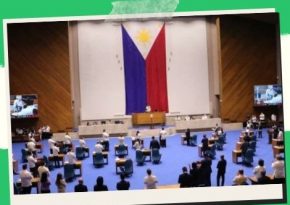
The Philippines requires alternate sources of financing
As the Philippines draws closer to its objective of upper-middle-income status, which would restrict development assistance to the country, it would eventually need new financial sources.
This is one of the key grounds, according to finance chief Benjamin Diokno, for the multi-billion-peso Maharlika Investment Fund (MIF), the nation’s first sovereign wealth fund, which aims to promote social and economic development.
According to Diokno, the MIF will give the government an extra source of funding and enable the quicker implementation of important projects in the fields of transportation, energy, and power.
Although there are funding options for infrastructure in the national budget, Diokno claimed that these are more time-consuming and dangerous since they require political assessment and approval.
Another source is through official development aid (ODA), which can take the form of a grant or loan and is distributed to support the social and economic welfare of developing nations like the Philippines.
According to Diokno, the Philippines will soon reach upper middle-income status and will no longer be eligible for the relatively cheaper ODA programs that are only offered to less developed nations.
As ODA funding runs out, he stated, “The Philippines must identify alternative sources of financing for its priority projects.”
As a result of the government’s decision to use quick-disbursing program loans during the epidemic, the nation’s active ODA increased to $30.7 billion (P1.57 trillion).
This was employed in programs and initiatives for the COVID response, infrastructure development, governance and institution development, social reform and community development, food security and environmental protection, trade and investment, and development of governance and institutions.
It should be noted that ODA funds must be allocated to contracts with foreign governments of nations with which the Philippines has diplomatic ties, commercial agreements, or other bilateral agreements, or that are members of the United Nations, their agencies, or multilateral or international lending organizations.
According to Diokno, ODA will decline once the nation reaches the upper-middle income bracket.
The Philippines is now categorized by the World Bank as a lower middle-income country with a gross national income (GNI) per capita that ranges between $1,086 and $4,255.
The Philippines should have a GNI per capita between $4,256 and $13,205 in order to fall into the upper-middle-income group.
The Philippines is anticipated to reach upper middle-income status by 2025 rather than 2024, according to the National Economic and Development Authority, as a result of the economy’s severe contraction in 2020 and the peso’s depreciation last year.
Similar to the public sector, Diokno claimed that private sector solicited and unsolicited proposals frequently take time, are the subject of drawn-out negotiations, and face legal challenges. However, he said that things will still go on.
According to the finance head, if there are fresh sources for significant priority projects, the national government’s fiscal flexibility will increase.
This means that additional government funds can be set aside for social protection and investments in human capital, according to Diokno.
Furthermore, Diokno guaranteed that the MIF would receive an initial $5 billion in seed money.
Without touching the overall international reserves, this also includes the P100 billion provided by the Bangko Sentral ng Pilipinas.
Felipe Medalla, the governor of the BSP, recognized that the institution is in sound financial standing and that it can afford to progressively raise its capitalization, according to Diokno.
The Land Bank of the Philippines will provide P50 billion, while the Development Bank of the Philippines will contribute P25 billion, as originally planned.
Additionally, Diokno anticipates a potential P150 billion in profits from the privatization. Bonds denominated in foreign currencies and mining royalties were listed as additional potential funding sources.
Save/Share this story with QR CODE
Disclaimer
This article is for informational purposes only and does not constitute endorsement of any specific technologies or methodologies and financial advice or endorsement of any specific products or services.
📩 Need to get in touch?
Feel free to Email Us for comments, suggestions, reviews, or anything else.
We appreciate your reading. 😊Simple Ways To Say Thanks & Support Us:
1.) ❤️GIVE A TIP. Send a small donation thru Paypal😊❤️
Your DONATION will be used to fund and maintain NEXTGENDAY.com
Subscribers in the Philippines can make donations to mobile number 0917 906 3081, thru GCash.
3.) 🛒 BUY or SIGN UP to our AFFILIATE PARTNERS.
4.) 👍 Give this news article a THUMBS UP, and Leave a Comment (at Least Five Words).
AFFILIATE PARTNERS

World Class Nutritional Supplements - Buy Highest Quality Products, Purest Most Healthy Ingredients, Direct to your Door! Up to 90% OFF.
Join LiveGood Today - A company created to satisfy the world's most demanding leaders and entrepreneurs, with the best compensation plan today.



 Business Technology, Finance Technology & Information Technology
Business Technology, Finance Technology & Information Technology





